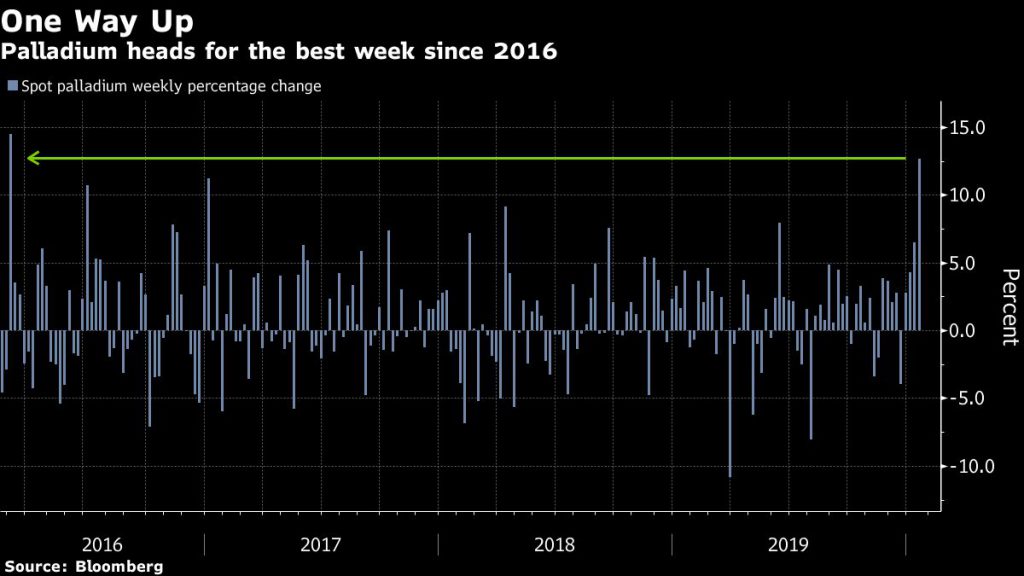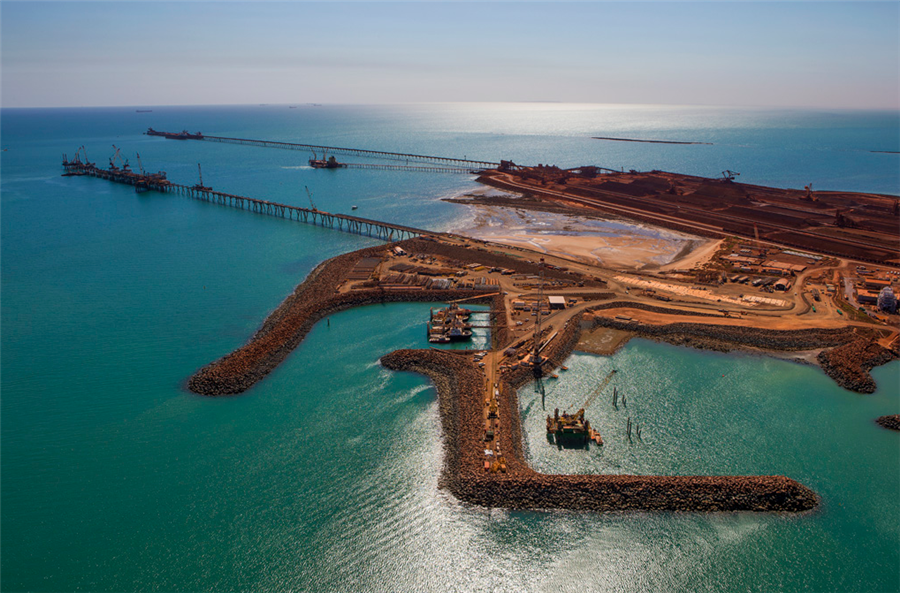Palladium tops $2,500 an ounce in biggest one-day surge since 2008

Palladium surged the most since 2008 as scant supply and robust demand extend a record-breaking rally.
Spot palladium jumped as much as 9.7% to $2,539.14 an ounce. The metal is headed for its best week since 2001 and showing little sign of slowing down, even as some analysts caution that prices may be due for a pullback. Prices were up 9% at 11:10 a.m. in New York.
While palladium’s rally has been driven by supply deficits and surging demand, the increases have exceeded market forecasts, said Rene Hochreiter, an analyst at Noah Capital Markets Ltd. who expects prices could retreat to average $2,250 an ounce for the rest of the year.
“Prices do not go up forever and the recent run should see a correction, though the fundamental shortfalls will not go away anytime soon,” Hochreiter said.

Palladium is trading at more than twice the price of platinum, which may motivate carmakers to use it as a substitute, according to Australia & New Zealand Banking Group Ltd.
Supply constraints in South Africa, where producers are grappling with an uncertain electricity system, have been one the main drivers for the price rally
“A modest recovery in the auto sector along with tighter emissions regulations should lend support,” ANZ strategists Daniel Hynes and Soni Kumari said in a report. Still, a “price setback is possible for palladium following its impressive rally this year.”
Palladium’s surge has been a boon for platinum miners in South Africa, which accounts for about 38% of global palladium supply. The FTSE/JSE Africa Platinum Mining Index is at the highest since 2011, and the shares of top producer Sibanye Gold Ltd. have risen nearly fourfold in the past 12 months.
“Further weakness in mining production can’t be ruled out,” Warren Patterson and Wenyu Yao, commodities strategists at ING Bank, said in a note to clients. “While higher prices should be encouraging miners to look to boost output, palladium is largely produced as a by-product, making supply more inelastic.”
Supply constraints in South Africa, where producers are grappling with an uncertain electricity system, have been one the main drivers for the price rally, said ABN Amro Bank NV strategist Georgette Boele.
“It’s a very structurally tight market,” Ryan McKay, an analyst at TD Securities in Toronto, said by phone. “Even the actual physical demand — automakers who use this stuff providing a bid for that metal — that drives the prices up when it’s super tight and supply is not really there.”
(By Felix Njini, with assistance from Justina Vasquez)
More News
Pilbara Rail Maintenance wins operational excellence award at Rio Tinto supplier gala
April 15, 2025 | 05:07 pm
Rio Tinto posts lowest Q1 iron ore shipments since 2019, tempers forecast
April 15, 2025 | 03:55 pm
{{ commodity.name }}
{{ post.title }}
{{ post.date }}




Comments